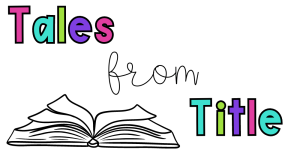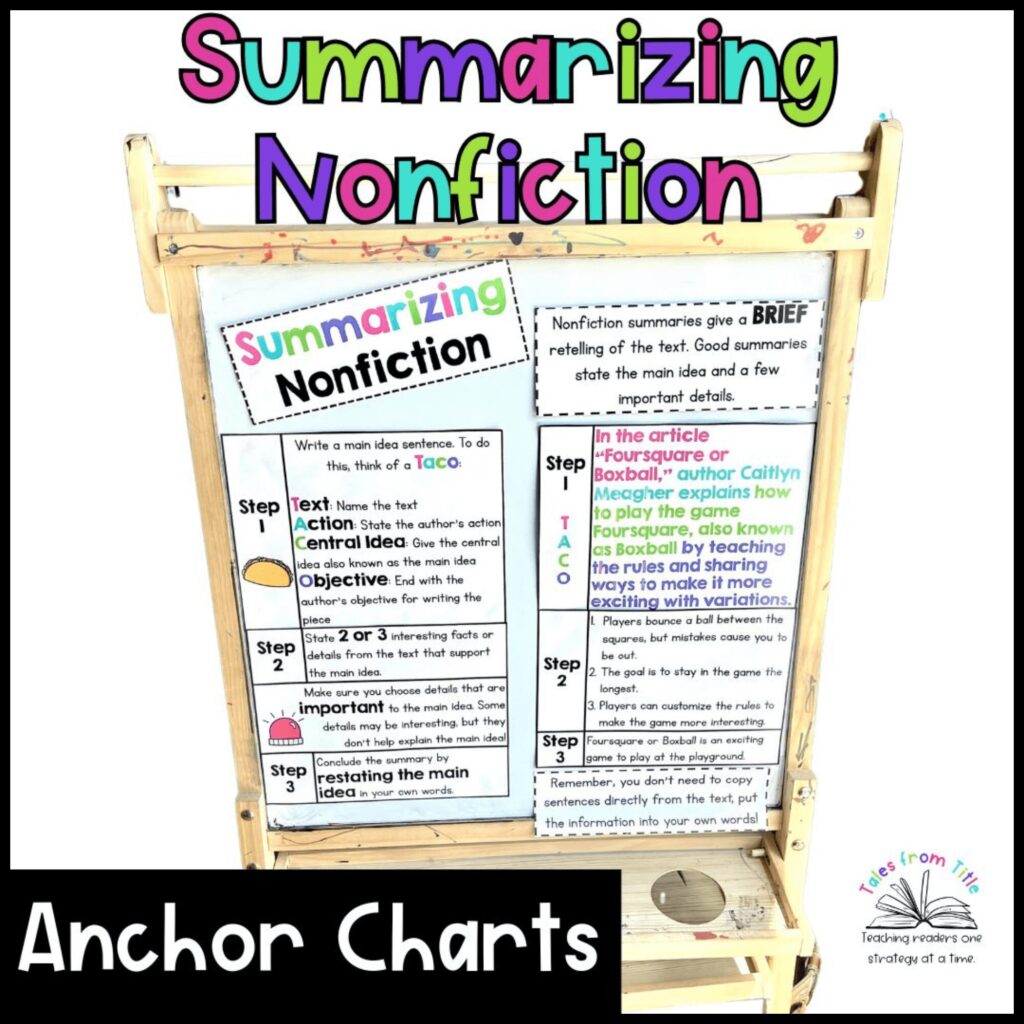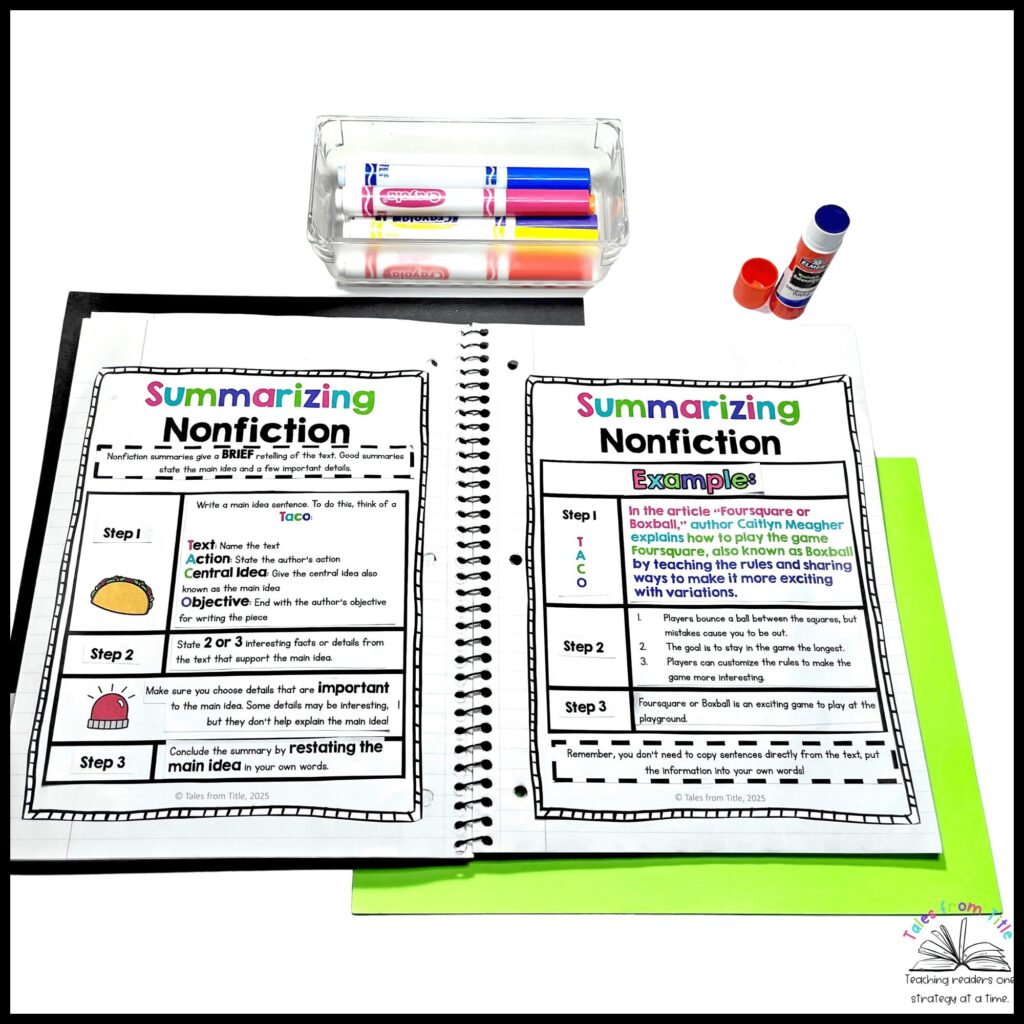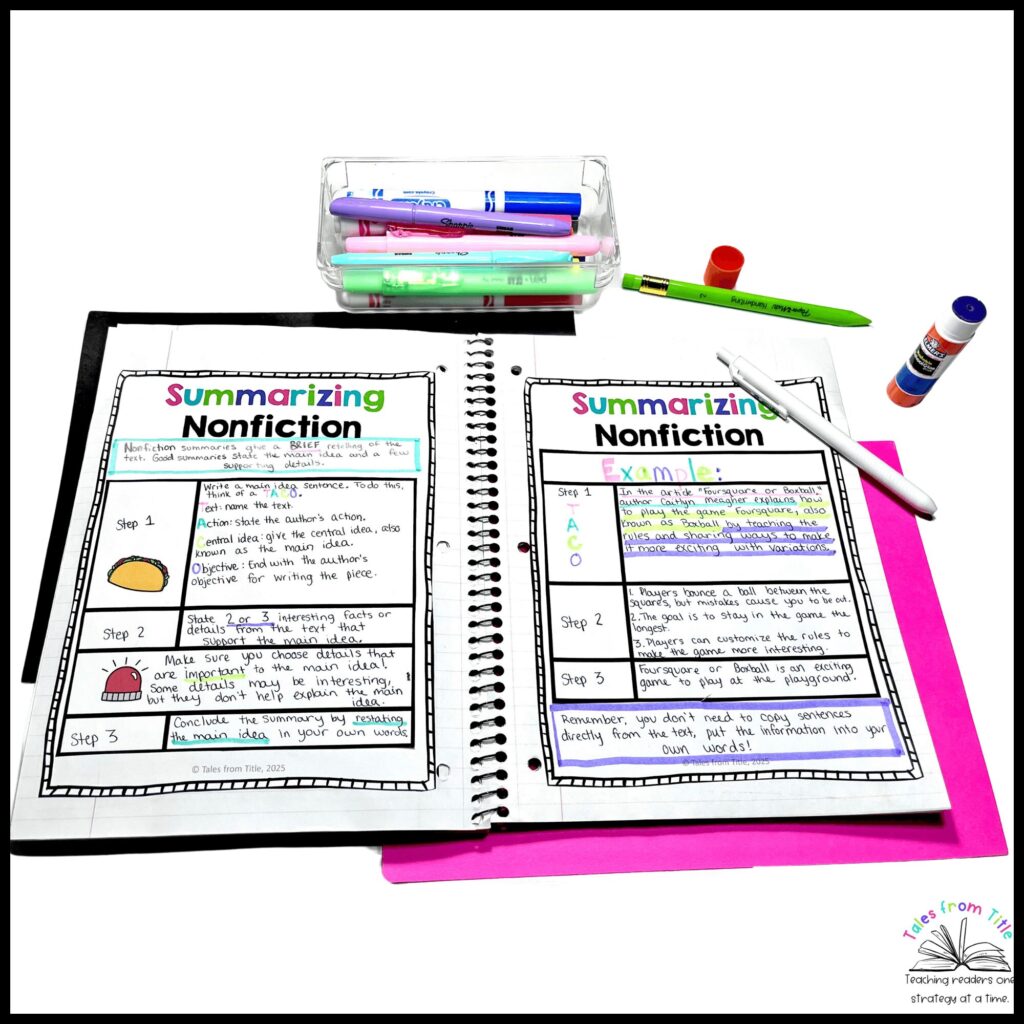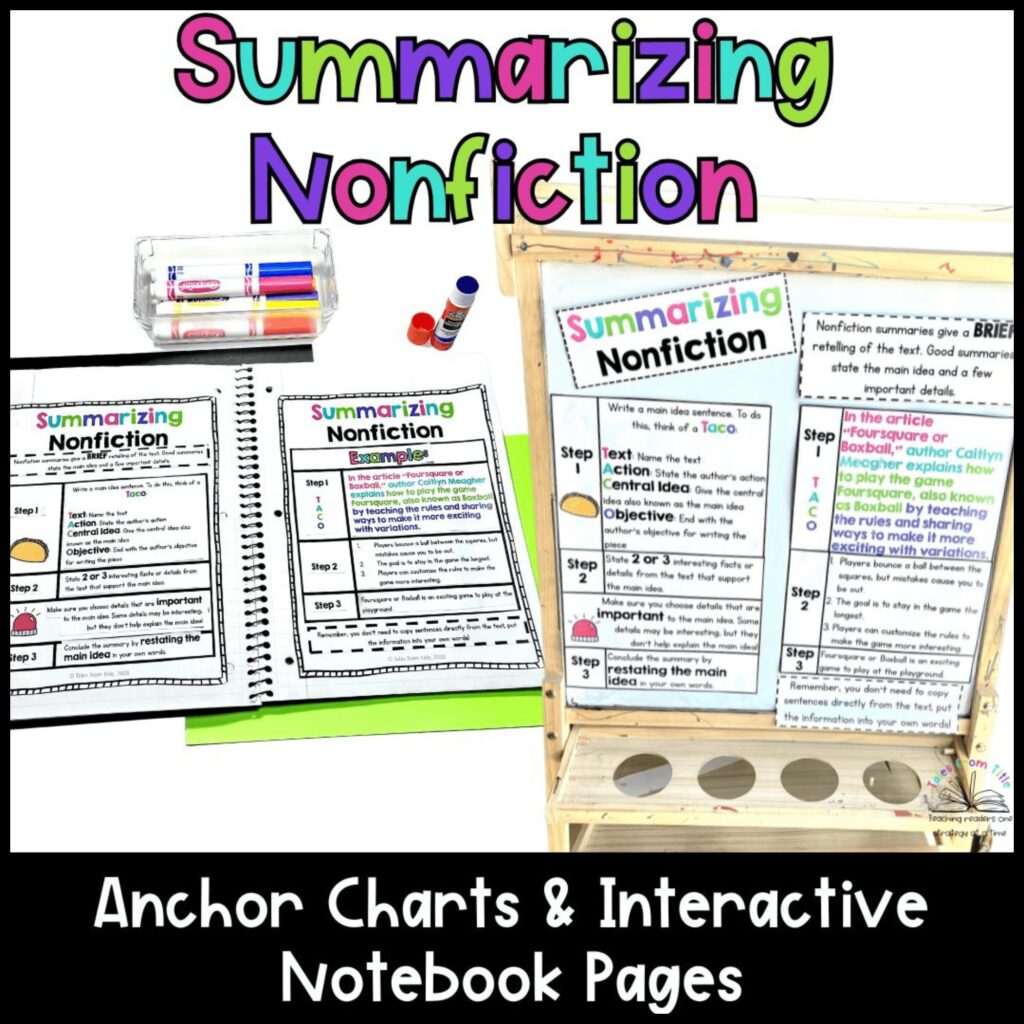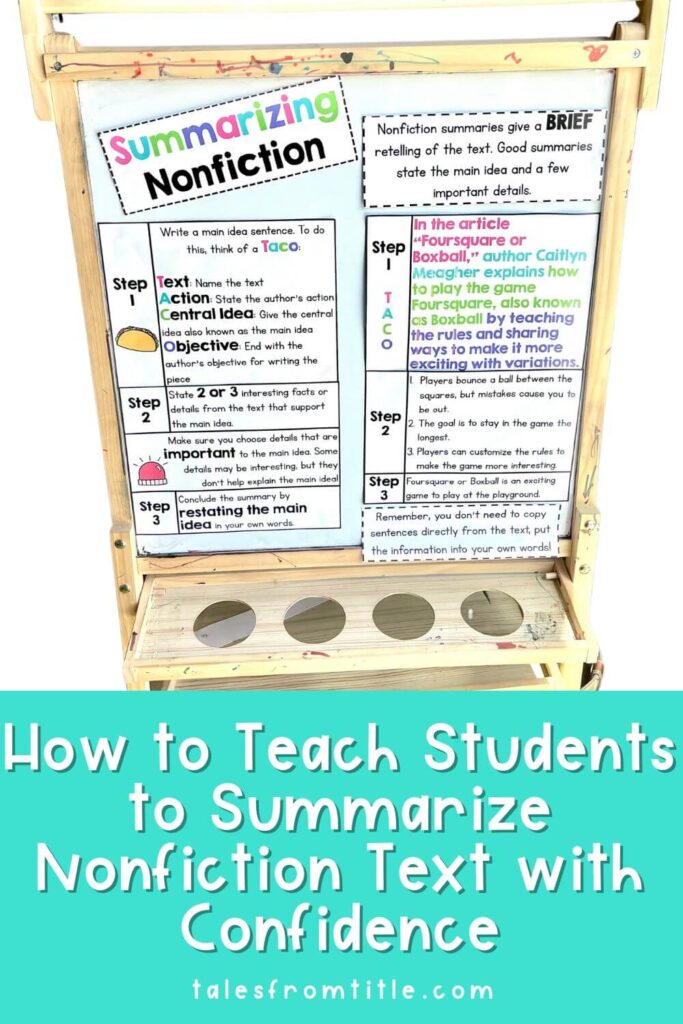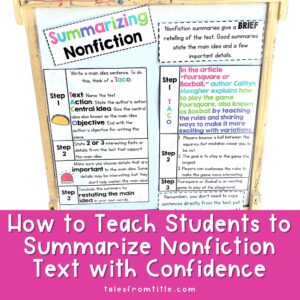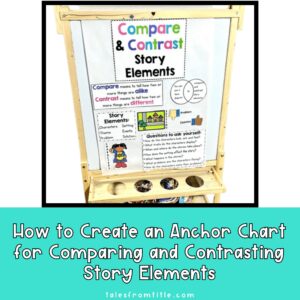If you’ve ever asked your students to summarize a nonfiction passage and received a response like “It was about animals” or a full-blown retelling of every single fact, you’re not alone. Summarizing nonfiction can be a challenging reading comprehension skill for upper elementary students to master. Yet, it’s also one of the most essential.
Effective summarizing requires students to synthesize information, identify what’s important, and express it clearly in their own words. This is no small task, especially for students in grades 3 – 5 who are still developing foundational comprehension skills. The good news? With the right support, your students can learn how to summarize nonfiction accurately and confidently.
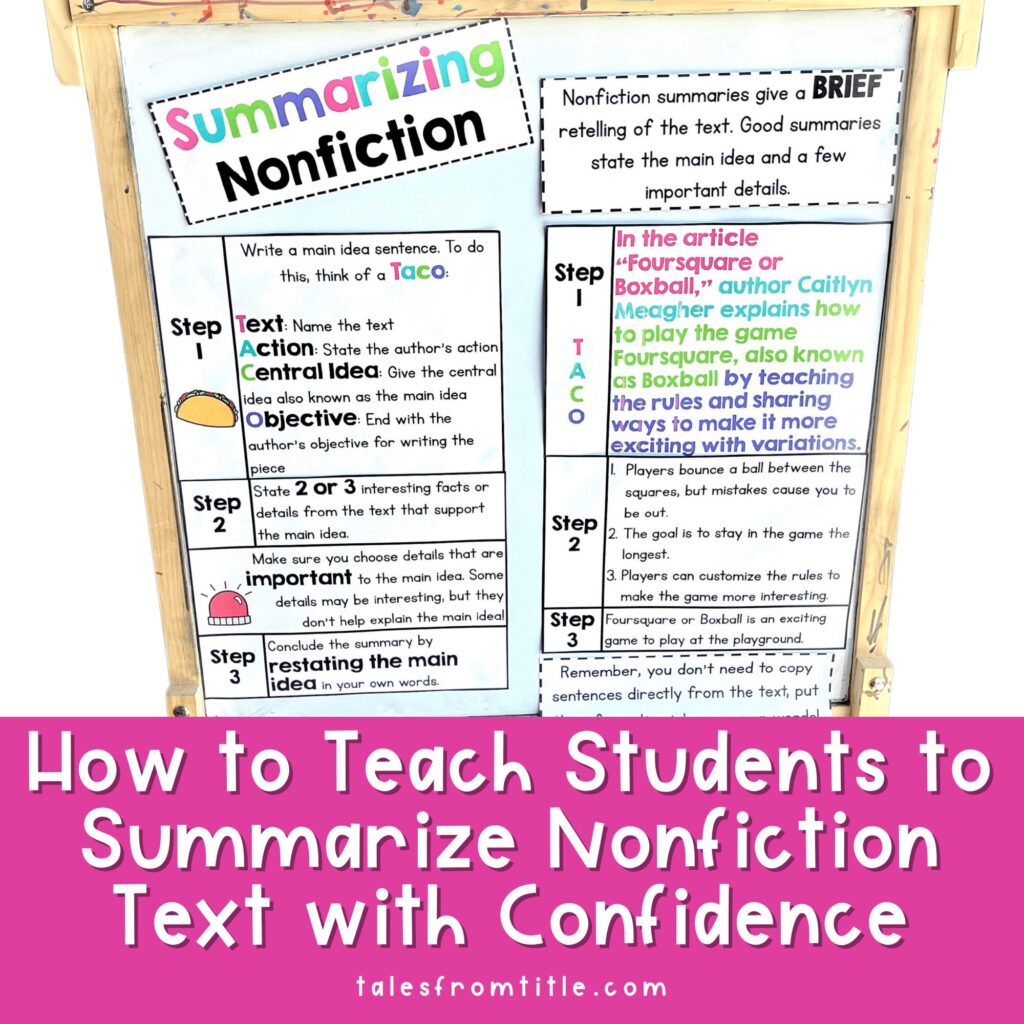
Why Summarizing Nonfiction Is So Difficult for Students
Summarizing is more than just shortening a passage, it’s about understanding the text’s purpose, identifying the main idea, and choosing supporting details that matter. In nonfiction texts, students can easily get lost in a sea of facts, dates, and vocabulary words. Without a clear strategy, they either write too much, include irrelevant information, or miss the point entirely.
That’s where explicit instruction and visual supports make a big difference. Teaching students how to summarize nonfiction texts step-by-step, and giving them tools to reference during and after your lessons can build their confidence and success with this skill over time.
Start with an Anchor Chart for Summarizing Nonfiction
One of the best ways to introduce or reinforce summarizing nonfiction is with a clear, visual anchor chart. A well-designed anchor chart gives students a reliable strategy they can revisit again and again during independent reading, small groups, or even test prep.
My Summarizing Nonfiction Anchor Charts are designed specifically for third through fifth grade. They’re clean, structured, and easy to understand, even for struggling readers. The charts walk students through the process of summarizing a nonfiction text by helping them answer key questions like:
- What is the main idea of this text?
- What are the most important supporting details?
- How can I express this information in my own words?
These anchor charts come in both full color and black-and-white formats and include student-sized versions that can be glued into notebooks for quick reference. They’re perfect for your classroom bulletin board, a reading focus wall, or a reading notebook page.
Reinforce the Skill with Interactive Notebook Pages
Seeing an anchor chart is one thing, using that information to apply the skill is another. That’s why I created Summarizing Nonfiction Interactive Notebook Pages to give students hands-on opportunities to practice summarizing in a guided, structured way.
There are two notebook options included:
- A low-prep version with all components pre-typed for your students. Just print, cut, and glue; no extra planning needed!
- A more interactive version where students write the information in their own words. This allows you to use student-friendly language or align with your reading curriculum while also encouraging ownership of the learning.
These notebook pages can be used during whole-group lessons or small group reading. Plus, once completed, they become part of a growing toolkit your students can refer back to throughout the school year.
Want Everything in One Time-Saving Resource?
If you’re ready to simplify your nonfiction comprehension instruction and give your students the visual and interactive tools they need to succeed, the Summarizing Nonfiction Anchor Charts and Interactive Notebook Pages Resource is your perfect solution.
This bundle includes:
- 📘 Full-page anchor charts (color + black & white)
- 📘 Student-sized charts for notebooks
- ✂️ Two interactive notebook formats
- 📝 Teaching tips to help you implement each piece effectively
- 💻 Digital versions for an easy-to-use display or an interactive lesson
Whether you’re teaching students who are just starting to navigate more complex nonfiction texts or students preparing for state tests, this bundle is adaptable for your classroom needs. It supports a gradual release model where you provide explicit instruction with anchor charts, then move into guided practice using the notebook pages.
Final Thoughts
Teaching students how to summarize nonfiction doesn’t have to be frustrating. With the right scaffolds in place, like visual anchor charts and interactive notebook pages, your students will develop the confidence and skills they need to identify main ideas, choose relevant details, and explain what they’ve learned in their own words.
These resources aren’t just tools, they’re time-savers, skill-builders, and confidence-boosters for both you and your students.
📚 Ready to help your students master summarizing nonfiction?
